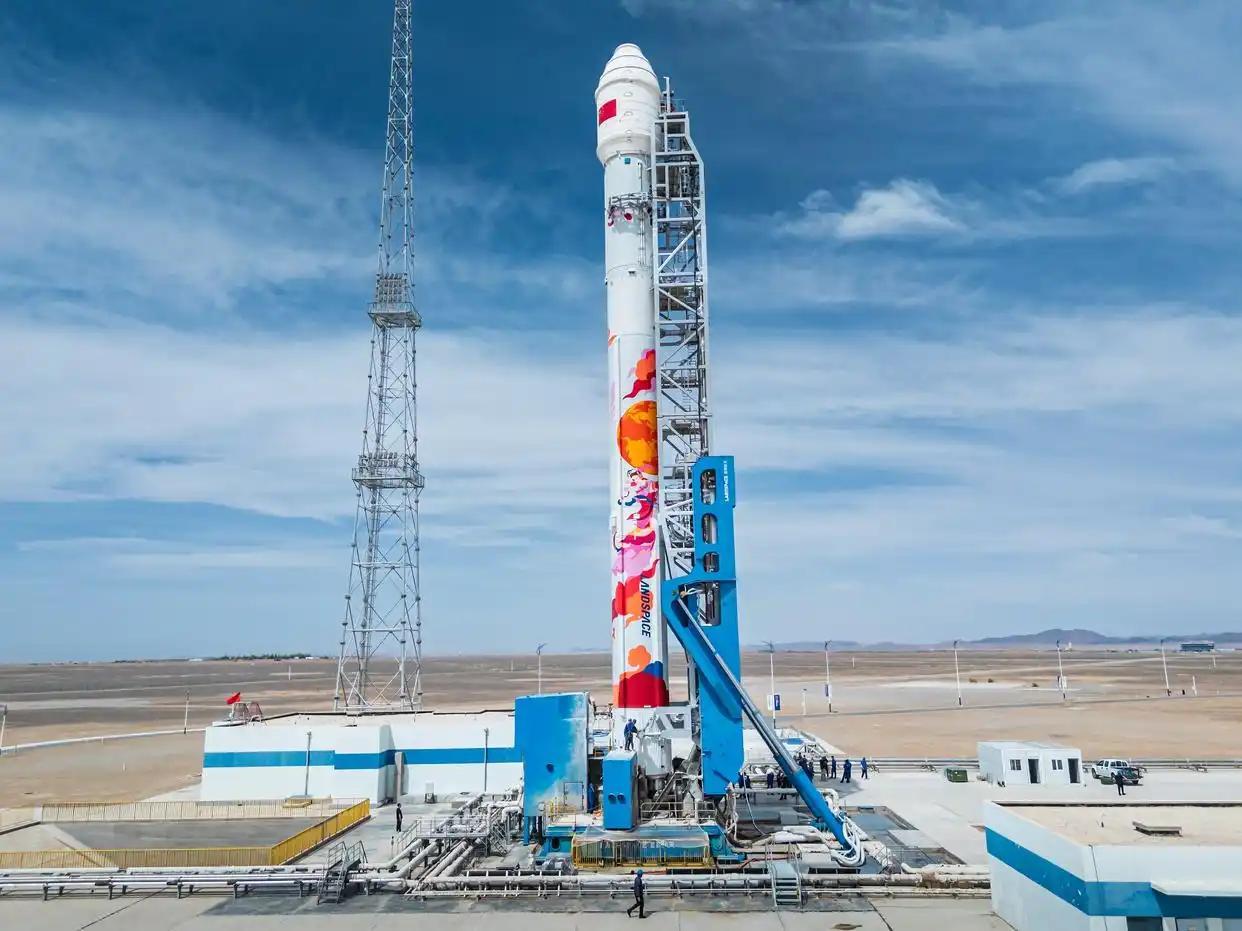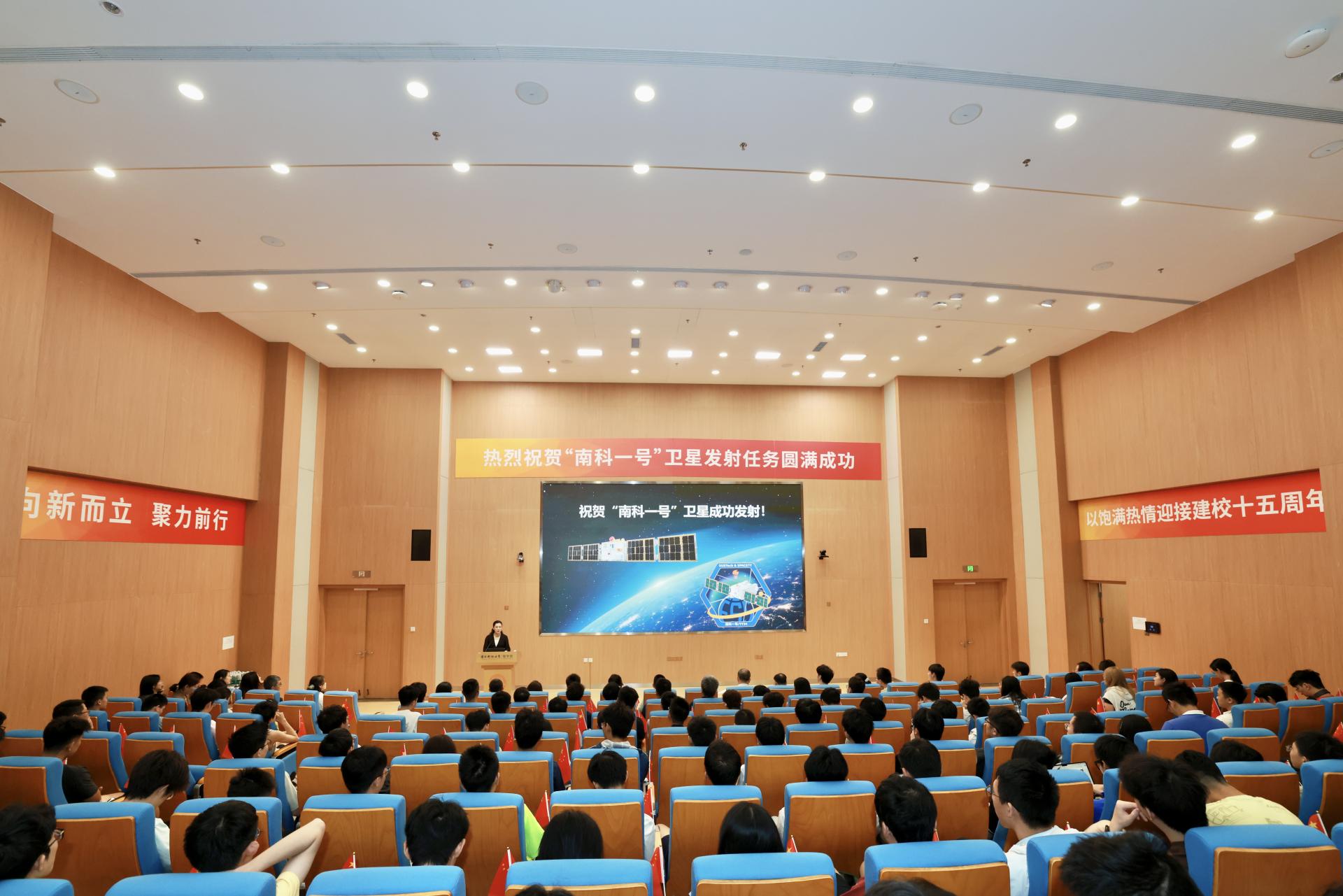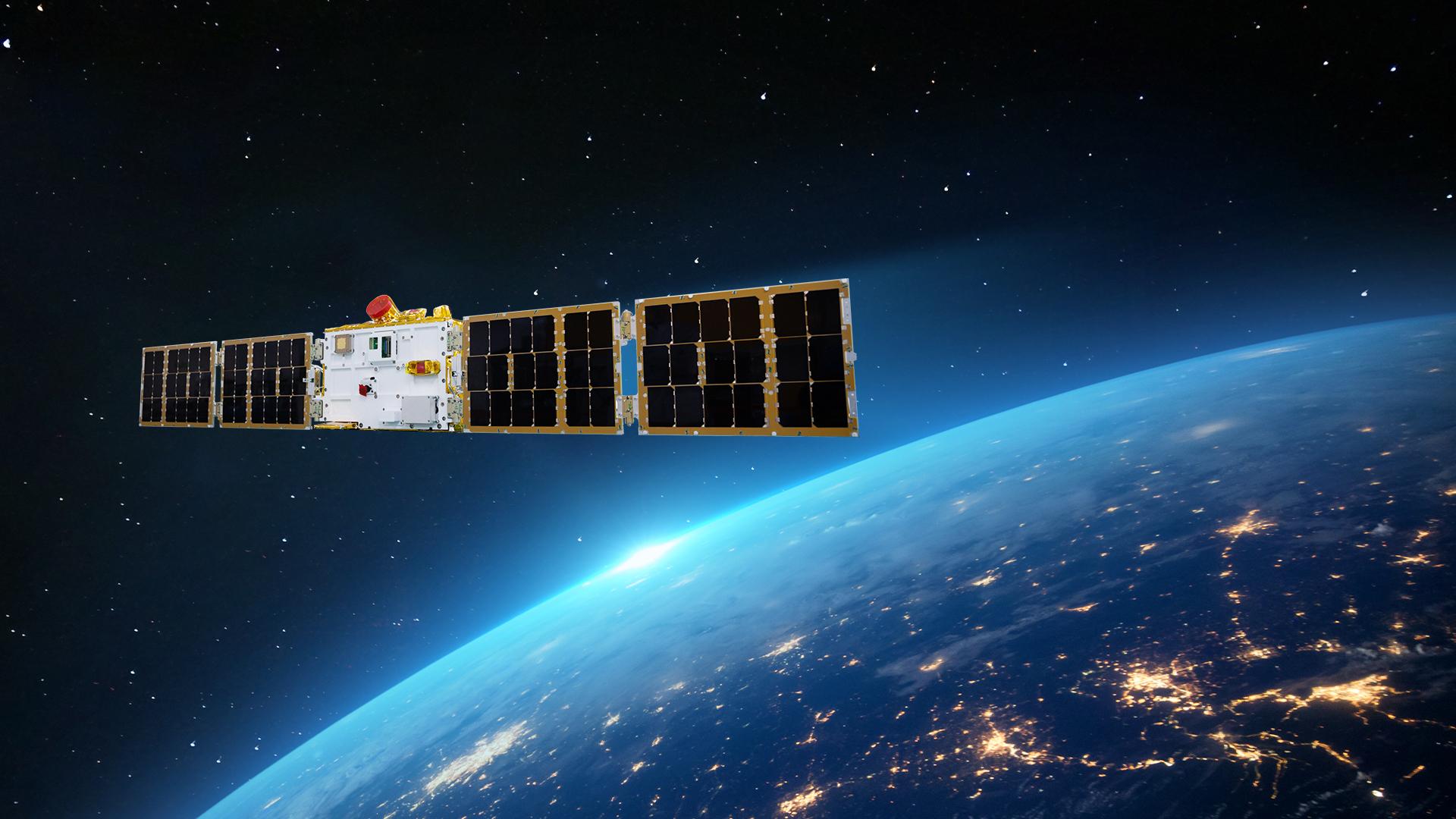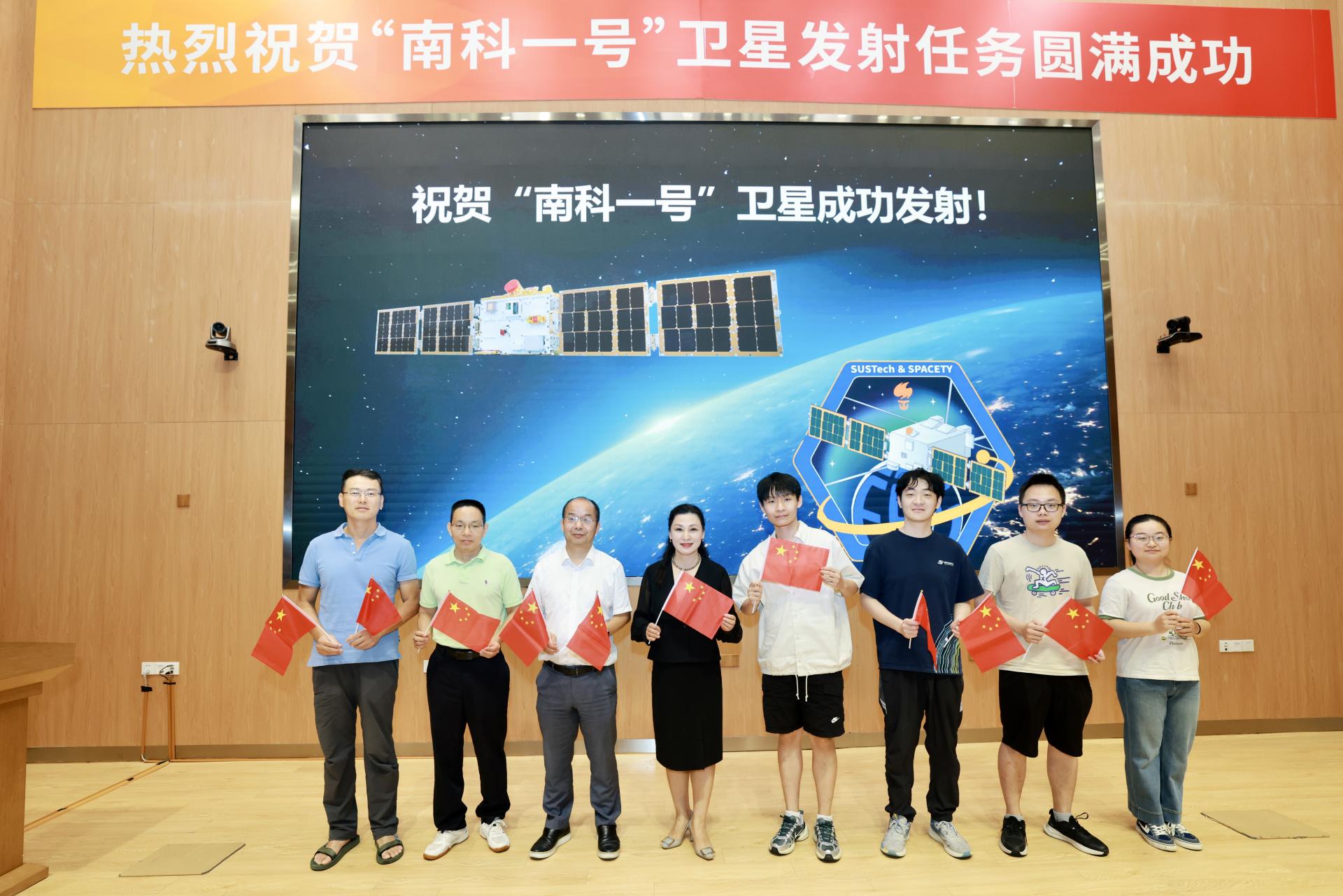At 12:12 on May 17, China celebrated a new achievement in aerospace advancement with the successful launch of the SUSTech-1 satellite. Developed by the Southern University of Science and Technology (SUSTech), the satellite was successfully launched aboard the Zhuque-2 Y2 rocket from the Jiuquan Satellite Launch Center.
This marks the first time a Shenzhen-based university has taken the lead in developing a scientific satellite. The Department of Earth and Space Sciences (ESS) at SUSTech independently developed the satellite’s scientific payloads, including a space electric field sensor and an aurora camera, representing a significant step forward in both academic innovation and commercial space collaboration.

Equipped with a 12-meter ultra-long space electric field antenna system, it’s the longest of its kind ever deployed on a small satellite. It also pioneers aurora imaging in China using a microsatellite platform. With its “low-cost, high-performance” design, SUSTech-1 achieves dual breakthroughs in both space electric field detection and auroral observation, injecting new momentum into the development of China’s deep space exploration technologies.
Advancing space science and aerospace environmental monitoring
SUSTech-1 is the University’s first microsatellite dedicated to space science research, featuring two self-developed scientific payloads: a space electric field measurement system and an aurora camera. The electric field sensor captures time-varying electric fields in the space plasma environment, supporting research on monitoring Earth’s magnetosphere and ionosphere. Meanwhile, the aurora camera provides wide-field, real-time imaging of auroral activity in high-latitude regions.
These two payloads enable studies of solar wind-magnetosphere interactions and the effects of space weather, providing essential data for forecasting space weather and improving the safe operation of spacecraft.

To celebrate the launch, faculty members and students gathered on campus to watch the live broadcast. Hong JIANG, University Council Chairperson, hailed the event as a historic moment for the University, coinciding with its 15th anniversary.
She emphasized that this achievement reflects SUSTech’s integration of education, science and technology, and talent development, and demonstrates its growing role in supporting national aerospace projects. She hoped the launch would inspire everyone at the University to further contribute to country’s major scientific and technological initiatives.
Professor Kaijun LIU from the Department of ESS, the project’s lead scientist, noted that SUSTech-1 responds to national strategic priorities in deep space exploration. The satellite’s data will support fundamental space physics research and applications in major projects such as the BeiDou Navigation Satellite System and the Chinese Space Station.
Two breakthrough technologies set new records
SUSTech-1 features three pairs of electric field antennas, measuring two, four, and six meters in length. The longest spans a total of 12 meters, setting a new world record for antenna length on a microsatellite.
The research team at SUSTech overcame significant engineering challenges by employing a dual-layer retractable antenna system and advanced 3D printing technology. This innovation reduced the total mass of the antenna and housing to just 1.7 kg and compressed the volume to 1.6U (approximately 10 × 10 × 16 cm), placing the system at the forefront of international standards and paving the way for future electric field detection technologies in space.

The mission also marks the first time a Chinese microsatellite has conducted optical aurora observations. With a carefully optimized orbital path, SUSTech-1 can observe auroras continuously for up to nine minutes during a single polar pass.
Its high-sensitivity camera captures dynamic changes in auroral activity, providing valuable insights into how solar wind interacts with Earth’s magnetosphere. The satellite is expected to fly over Shenzhen approximately 14 times per month, capturing images of urban terrain that will provide new data sources for the city’s geographic information systems.
Beyond its main payloads, SUSTech-1 carries additional experimental modules, including the TianGe payload, a radiation sensor, Guangxi University’s CXPD2 payload, and independently developed IP visualization and thermoelectric payloads from Spacety, further enhancing its scientific capabilities.
Merging research and teaching: Student participation builds hardcore skills
The SUSTech-1 project exemplifies the University’s strong integration of research and teaching. The concept was first proposed in 2018 by Xiaofei CHEN, Chair Professor of the Department of ESS and Academician of the Chinese Academy of Sciences (CAS).
Since the project’s official launch in 2020, more than 20 undergraduate and graduate students have participated in every phase—from design and development to testing—under the guidance of Professors Kaijun LIU and Shengyi YE and Associate Professor Jian YANG. Their work included payload development, integration with the satellite platform, launch coordination, in-orbit operations, and data processing and analysis. This hands-on experience significantly broadened the students’ horizons, improved their practical skills, deepened their engagement in research, and sparked greater interest in space science and exploration.
Following extensive ground testing, both payloads are expected to operate in orbit for 1–2 years, collecting data that will be accessible for teaching and research across the University. The results will be submitted for publication in domestic and international journals.

After witnessing the launch, students expressed their excitement, noting that from classroom concepts to seeing the satellite reach orbit, they witnessed firsthand what it means to serve the nation through science.
Professor Shengyi YE emphasized that SUSTech-1 validates several cutting-edge space exploration technologies and lays the groundwork for future missions. The team plans to advance core technologies, support Shenzhen’s growing aerospace industry, and contribute to the country’s deep space exploration.
Proofread ByYilin ZHOU
Photo By